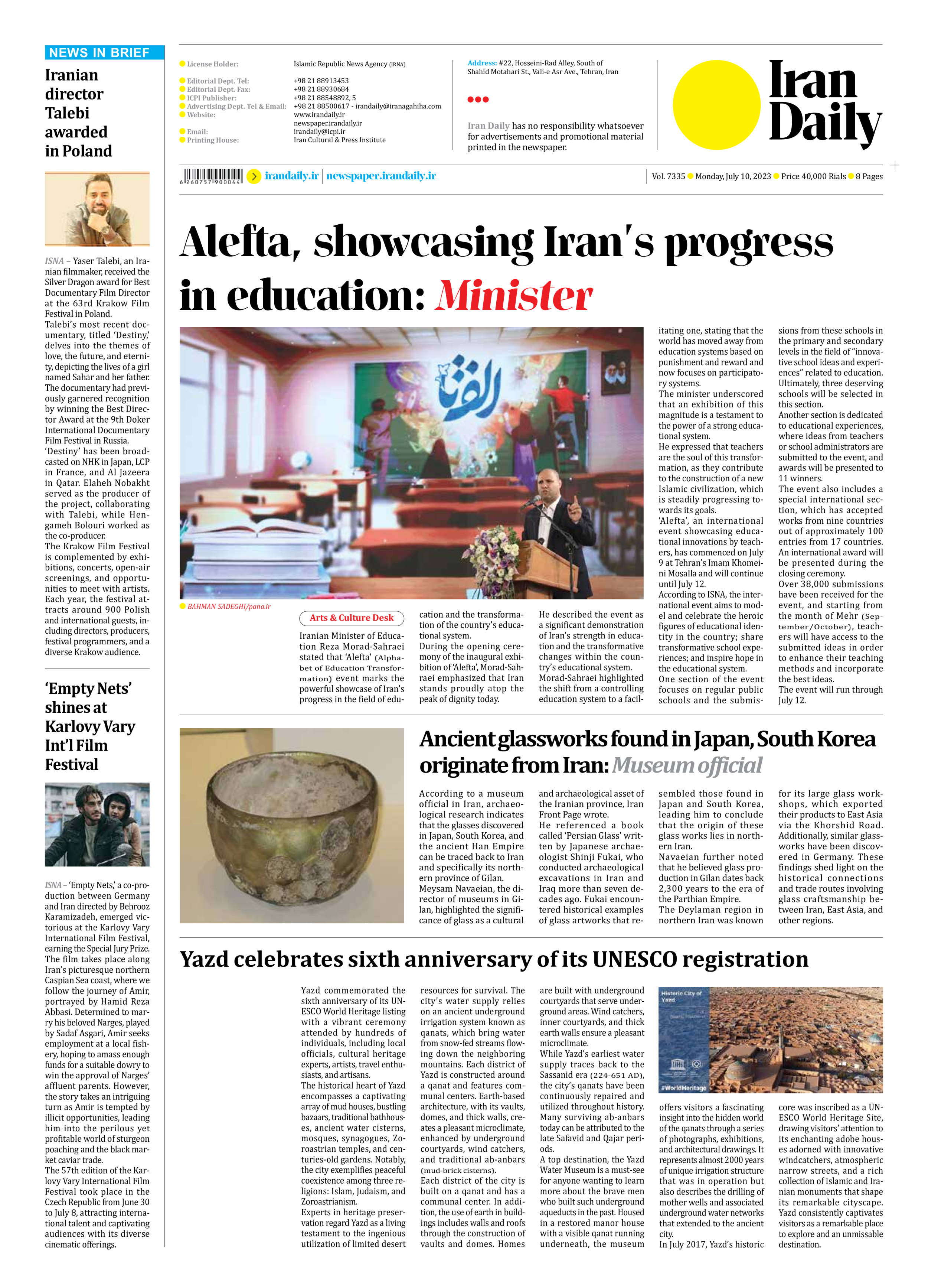
Yazd celebrates sixth anniversary of its UNESCO registration
Yazd commemorated the sixth anniversary of its UNESCO World Heritage listing with a vibrant ceremony attended by hundreds of individuals, including local officials, cultural heritage experts, artists, travel enthusiasts, and artisans.
The historical heart of Yazd encompasses a captivating array of mud houses, bustling bazaars, traditional bathhouses, ancient water cisterns, mosques, synagogues, Zoroastrian temples, and centuries-old gardens. Notably, the city exemplifies peaceful coexistence among three religions: Islam, Judaism, and Zoroastrianism.
Experts in heritage preservation regard Yazd as a living testament to the ingenious utilization of limited desert resources for survival. The city’s water supply relies on an ancient underground irrigation system known as qanats, which bring water from snow-fed streams flowing down the neighboring mountains. Each district of Yazd is constructed around a qanat and features communal centers. Earth-based architecture, with its vaults, domes, and thick walls, creates a pleasant microclimate, enhanced by underground courtyards, wind catchers, and traditional ab-anbars (mud-brick cisterns).
Each district of the city is built on a qanat and has a communal center. In addition, the use of earth in buildings includes walls and roofs through the construction of vaults and domes. Homes are built with underground courtyards that serve underground areas. Wind catchers, inner courtyards, and thick earth walls ensure a pleasant microclimate.
While Yazd’s earliest water supply traces back to the Sassanid era (224-651 AD), the city’s qanats have been continuously repaired and utilized throughout history. Many surviving ab-anbars today can be attributed to the late Safavid and Qajar periods.
A top destination, the Yazd Water Museum is a must-see for anyone wanting to learn more about the brave men who built such underground aqueducts in the past. Housed in a restored manor house with a visible qanat running underneath, the museum offers visitors a fascinating insight into the hidden world of the qanats through a series of photographs, exhibitions, and architectural drawings. It represents almost 2000 years of unique irrigation structure that was in operation but also describes the drilling of mother wells and associated underground water networks that extended to the ancient city.
In July 2017, Yazd’s historic core was inscribed as a UNESCO World Heritage Site, drawing visitors’ attention to its enchanting adobe houses adorned with innovative windcatchers, atmospheric narrow streets, and a rich collection of Islamic and Iranian monuments that shape its remarkable cityscape. Yazd consistently captivates visitors as a remarkable place to explore and an unmissable destination.







